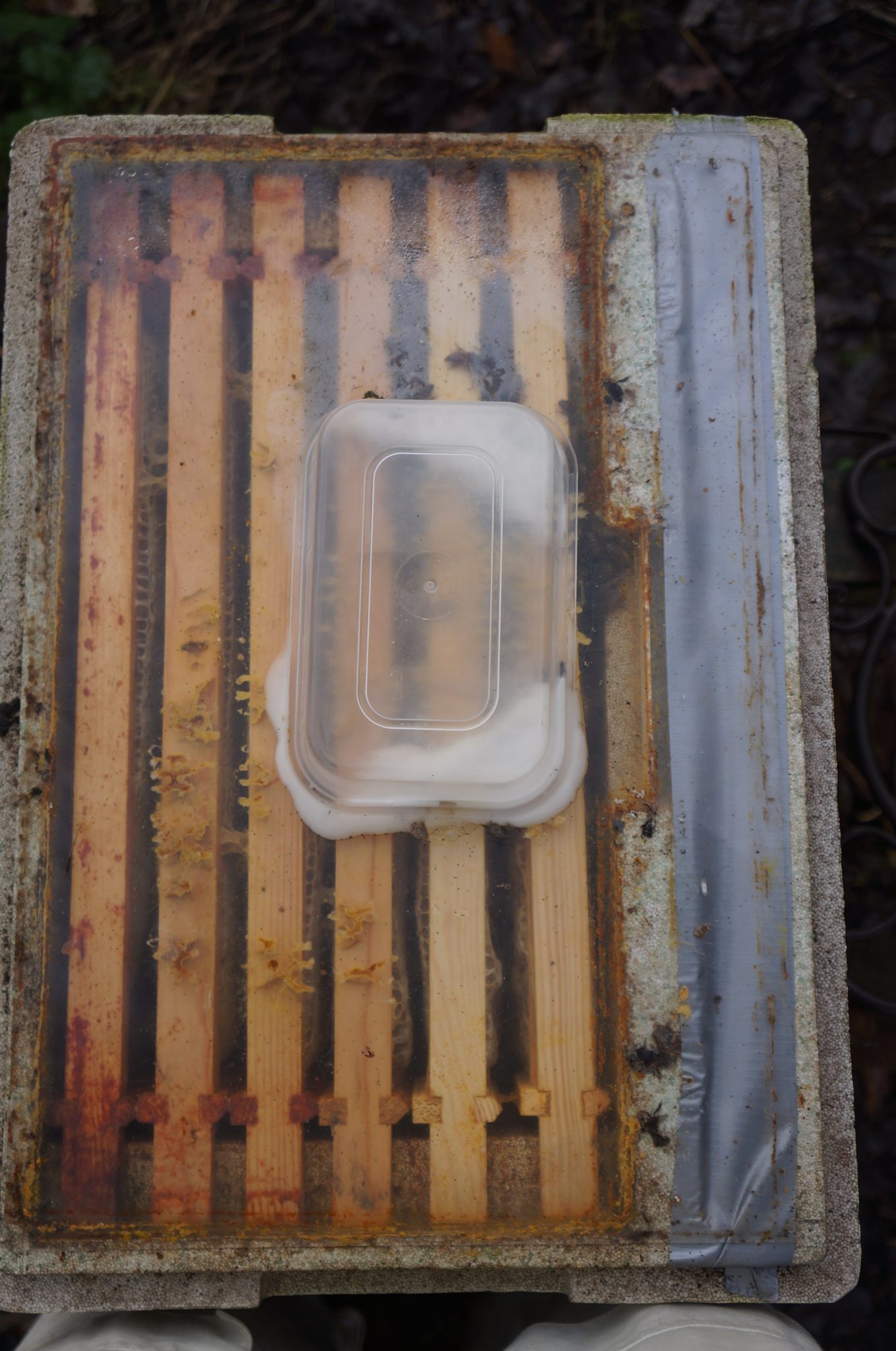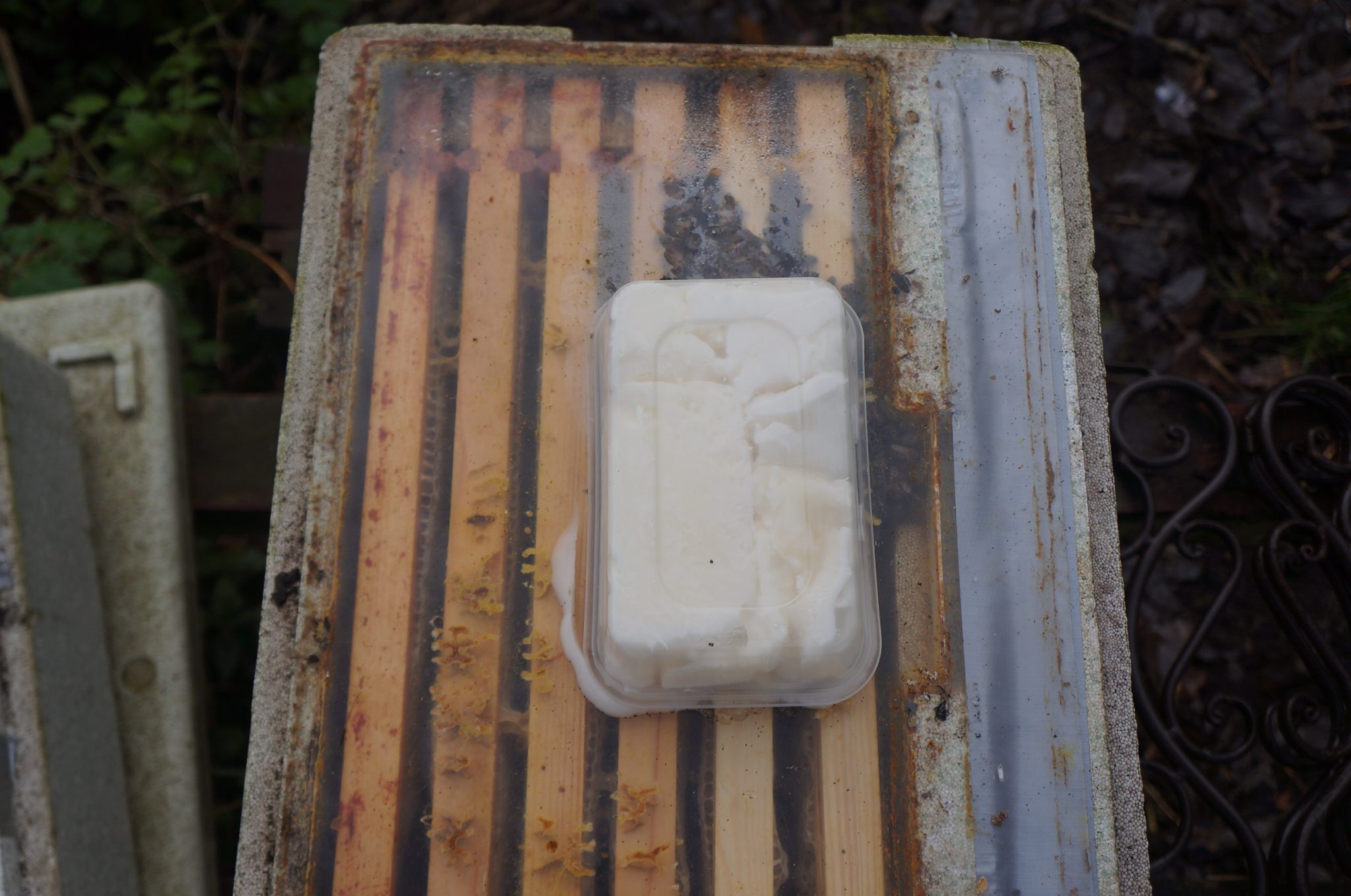 Abraham Lincoln
If given the truth, the people can be depended upon to meet any national crisis...
Abraham Lincoln
If given the truth, the people can be depended upon to meet any national crisis...
 Guildford news...
for Guildford people, brought to you by Guildford reporters - Guildford's own news service
Guildford news...
for Guildford people, brought to you by Guildford reporters - Guildford's own news service
Beekeeper’s Notes: Feed Or Starve
Published on: 1 Dec, 2019
Updated on: 30 Nov, 2019
Hugh Coakley keeps bees in Worplesdon
I am sometimes asked if I feed my bees.
The simple answer is that I feed them if they need it and I only take honey from colonies that have spare.

Two colonies, the nearest one is in a half-sized box called a nuc. It has a small swarm collected late in the year.
I was taught to ‘heft’ the hive before the winter, that is to lift one side up with one hand. If it feels like it is filled with bricks, it has enough honey stores. If not, it needs help.
An example is the two small swarms I collected in September. The chances of the separate swarms so late in the year surviving a winter were low. They hadn’t had the time or the beepower to collect sufficient nectar which they would then have to turn into honey for their winter larder.
The half-sized hive ‘hefted’, as expected, was very light.

The pot of fondant is nearly all eaten by the bees. Even though it was a cold day when I took the photo, the hive is covered with a perspex sheet which keeps in the heat.
So they are low in stores and I am feeding them. Initially with a sugar solution when it was warm enough and now, in the cold, with baker’s fondant. It is the same stuff that you have on a Chelsea bun.
I use an inverted food container filled with about a pound and a half of fondant. That lasts about three weeks. On that basis, this very small colony will eat about 11 lbs or 5kg over the winter and it needs to be available to the bees continually. I look in without disturbing them about once a week, just to check.
It just shows that they need a huge amount of honey to keep going. A full size hive could eat 50lb or 20kgs or even more depending on the size.
I am crossing my fingers that the swarm comes through the winter. It won’t be for a lack of sustenance.
Interesting to see this week the article about Tesco taking its own brand honey off the shelfs because of concerns that it contains adulterated ingredients.
The EU estimated that, out of the 200,000 tonnes imported honey, about 20% coming into the EU is adulterated or harvested too early and then artificially dried.
Dare I say buy local honey?

See Dragon story: GBC’s Explanation of Major Land Sale Notice Error ‘Borders on Arrogant’ Says Councillor







Recent Articles
- Filmfest – a Festival of German Films
- Letter: Help Abroad Should Not Be to the Detriment of Those Here
- Armed Police Deployed After Fight At Ash Vale Pub – Four Arrested
- Surrey Schools Could Have ‘Meat-free Mondays’ if Strategy Adopted
- Man Sentenced to 60 Months Behind Bars After Kick Left Victim Unconscious
- Opinion: Action on Building Heights is Needed Now
- Aux Nightclub Closes Suddenly – Police Investigation Underway
- £20,000 Offered to Help Solve 30-year-old Woking Murder Case
- Letter: Jeremy Hunt Has Not Engaged With Ash Parish Council As Claimed
- New On-line Directory for Community Help and Support Throughout Surrey


Search in Site
Media Gallery
Dragon Interview: Local Artist Leaves Her Mark At One of England’s Most Historic Buildings
January 21, 2023 / No Comment / Read MoreDragon Interview: Lib Dem Planning Chair: ‘Current Policy Doesn’t Work for Local People’
January 19, 2023 / No Comment / Read MoreA3 Tunnel in Guildford ‘Necessary’ for New Homes, Says Guildford’s MP
January 10, 2023 / No Comment / Read More‘Madness’ for London Road Scheme to Go Ahead Against ‘Huge Opposition’, Says SCC Leader
January 6, 2023 / No Comment / Read MoreCouncillor’s Son Starts Campaign for More Consultation on North Street Plan
December 30, 2022 / No Comment / Read MoreCounty Council Climbs Down Over London Road Works – Further ‘Engagement’ Period Announced
December 14, 2022 / No Comment / Read MoreDragon Interview: GBC Reaction to the Government’s Expected Decision to Relax Housing Targets
December 7, 2022 / No Comment / Read MoreHow Can Our Town Centre Businesses Recover? Watch the Shop Front Debate
May 18, 2020 / No Comment / Read More







Recent Comments